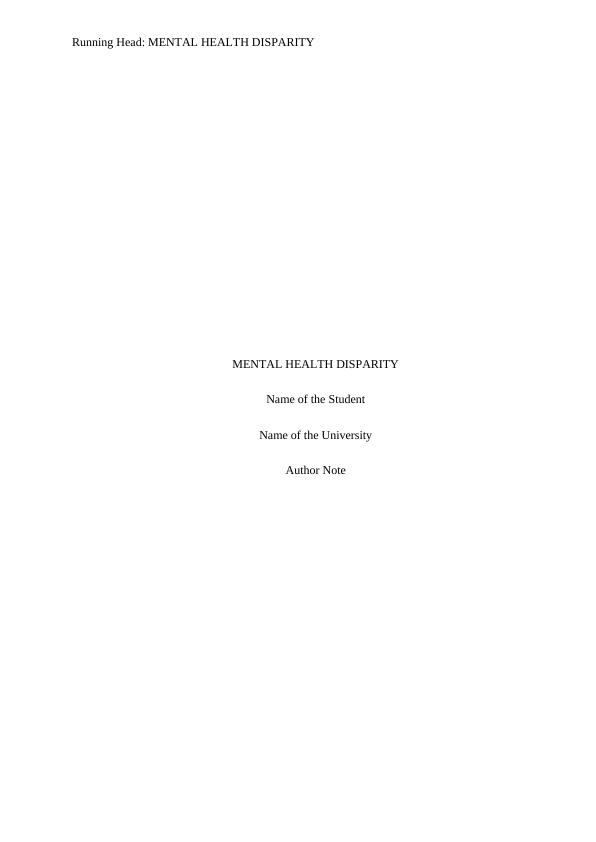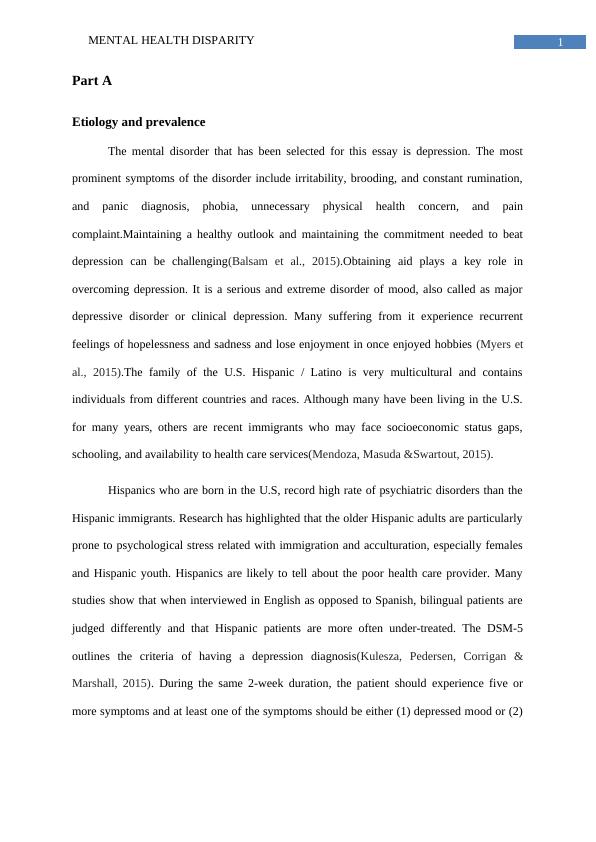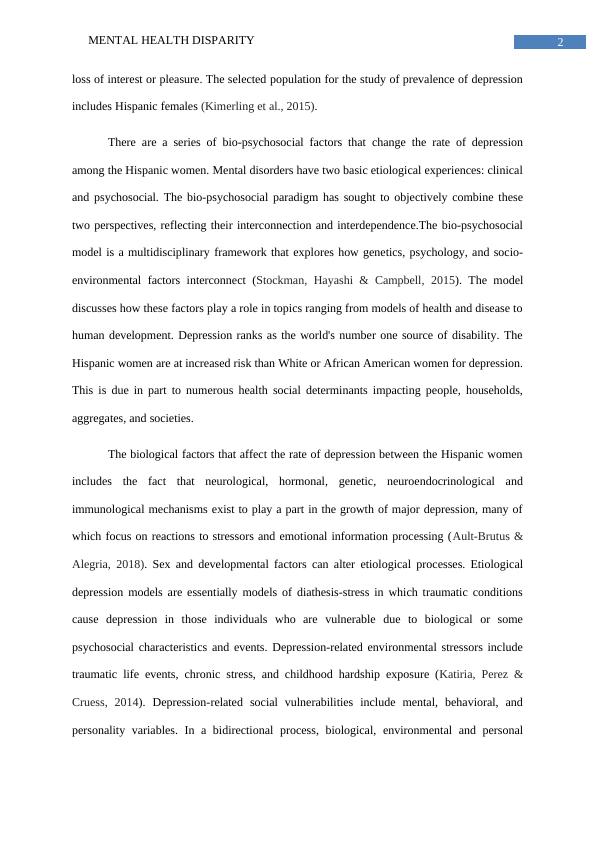Mental Health Disparity Research 2022
This course focuses on the multidimensional assessment of functioning of children, adolescents, and adults, with an emphasis on evaluating and adapting assessment approaches and methods that are culturally congruent with clients' experiences.
8 Pages2267 Words23 Views
Added on 2022-09-28
Mental Health Disparity Research 2022
This course focuses on the multidimensional assessment of functioning of children, adolescents, and adults, with an emphasis on evaluating and adapting assessment approaches and methods that are culturally congruent with clients' experiences.
Added on 2022-09-28
ShareRelated Documents
End of preview
Want to access all the pages? Upload your documents or become a member.
Mental Health Disparity Assessment 2022
|7
|2029
|24
Substance Use Disorder Family-Centred Therapy for Hispanic Americans
|15
|1662
|290
Bio-Psychological Factors Contributing to Depression: Nursing Interventions and Ethical Implications
|9
|2829
|414
Psychology, Biological and social influences of depression
|11
|3309
|287
Schizophrenia: An Overview
|14
|3544
|101
Nursing Plan of Care for Schizoaffective Disorder: A Case Study
|11
|2995
|42



